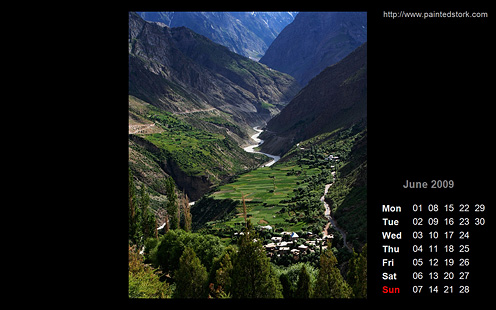Ladakh – The complete guide to Leh – Manali Road – V
Keylong to Sarchu
The road climbs up steadily after Keylong, keeping Bhaga River to the right. It is a deep valley for first half hour of the journey. At Jispa, the next big village, the river widens and the road descends closer to the valley floor. Jispa is another place to break for the night on the way to Leh, popular with private bus operators and with people driving on their own. A few mid range accommodations dot the town, but there are no budget options available.
Not far from Jispa is Darcha, the last round-the-year settlement on the road till you enter Indus Valley. It is nothing more than a bunch of shops lined along the main road and a police check-post for foreigner registration. It is also the last place on the road served by Himachal Parivahan’s local buses.
A small road runs to the left just after Darcha, connecting the villages deep in the mountains with the Manali-Leh highway. It is though this road that trekkers begin the long walk to Zanskar and further to Lamayuru Village in the Indus Valley. The twenty day trek is getting shorter every year, as the BRO is building an all-weather road to connect Darcha with Padum and further to Nyemo Village on the bank of Indus. The progress of construction is slow paced and may take many more years before it traverses over perennially snowbound Shingo La. But the progres is visible, with more than 40km of the road already built between Darcha and Padum. We did not know as we passed Darcha, but this was the path we would choose later to return from Ladakh to Manali.
From Darcha, it is a steady climb for next 40km to Baralacha la, the highest point in the road so far. Trees now disappear completely from the landscape, limiting the vegetation to tiny grass and occasional shrubs. It will be another 8 hours before seeing even a single tree, until the road approaches Indus Valley. Pigeons keep company of travellers in this near lifeless road over the mountains. Besides people, they are the only living beings that show up constantly along the way. They are there atop Baralacha la, and even on Tanglang la – the highest point on the highway, showing up at frequent intervals walking along the road and quickly hopping aside for a brief moment on the approach of a vehicle.
Mountains continue to grow taller and more arid as the road progresses north towards Baralacha la. But for the high peaks that have retained patches of last year’s snow, mountain surface is now in all hues of brown – chocolate brown, muddy brown and at some places reddish brown. Shades of brown are to dominate the landscape for rest of the way.
11km before Baralacha la is Deepak Tal – a lake I have heard of and looking forward to see. It turns out to be a small tank adjoining the road, its waters calm, clear and green. Suraj Tal, another lake at Baralacha is bigger, and stands against a backdrop of views of snowy peaks from the top. The road runs along Bhaga River all the way to the pass where she emerges from the middle of rocks as a small stream. To the other side of these rocks is Suraj Tal, probably connected to the stream through an underground channel.
Descent from Baralacha is quick. At the floor of the valley is awkwardly named Bharatpur City, which is nothing more than half a dozen parachute tents huddled together. Beyond Bharatpur City is the high altitude plateau of Sarchu. It is now one long straight road on a perfectly glat terrain, which feels like an expressway after going through ups and downs of the mountain roads for the whole day. It is now the turn of Yunam River to accompany the traveller till Sarchu.
Sarchu is the next option for breaking the journey. It is higher and colder than Keylong or Darcha, and many people say that it tends to get uncomfortable. The rarefied and dry air can add to the discomfort. At the approach of Sarchu is a line of luxury tents that are managed by HPTDC and a little ahead of them are a bunch of parachute tents.
A few kilometers after Sarchu, the road begins climbing suddenly over a series of switchbacks, adding nearly a kilometer to the altitude in no time.
